1. What is Customer Education?
Customer education involves providing clients with the necessary information, knowledge, and skills that are important while using the company’s products or services effectively. Delivering educational information to customers can be done via various methods, such as training sessions, tutorials, webinars, and detailed written documentation. In most cases, the company’s main goal is to ensure that a customer who has purchased a certain product understands how to use it and can make maximum use of the service they own.
Customer education surfaced at the beginning of the 20th century when companies first developed instruction manuals and offered training to customers in person to help them use those companies’ products. The modern era, namely the digital revolution, naturally has introduced profound changes to customer education. Today, companies no longer have to rely on paper and direct human contact to educate the customer. Every customer is now able to find most of the educational material online on the company’s website, online stores, electronic libraries, or educational online platforms.
It is worth outlining that customer education seems to be more important today than it ever was before. On one hand, modern goods and services become higher in complexity, which makes it tougher for customers to use them effectively. On the other hand, the market is more competitive than ever. A customer who is better educated is more satisfied and loyal.
Key Components
- Instructional content. Such content includes manuals, FAQ sections, and other types of how-to guides. They are written as step-by-step instructions on how to take specific actions.
- Interactive training. Those are webinars, workshops, live demos, and all other types of informal training that allow customers to communicate with the provider directly.
- Self-service resources. Those are the materials that customers can use without any particular schedule: online courses, video tutorials, and knowledge bases fall under this category.
- Community support. Forums, user groups, and social media sites should also be taken into consideration – there, the actual customers can share their best practices and exchange experiences.
2. Benefits of Customer Education
Customer education offers numerous benefits that can significantly impact a company’s success. Here are some key advantages:
Improved Customer Satisfaction
Educated customers are usually satisfied with their purchases when they understand exactly how to use products or services effectively. It can lead to positive feedback and referrals. According to a report by the Harvard Business Review, companies that excel in customer education see a significant increase in customer satisfaction rates (SuperOffice CRM).
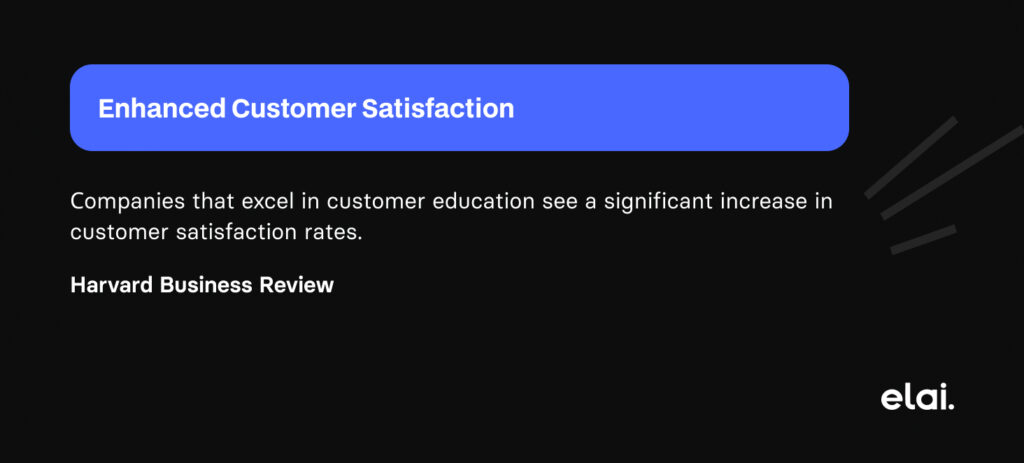
Increased Customer Loyalty
Confident customers are loyal customers. Research from Bain & Company shows that increasing customer retention rates by 5% can increase profits by 25% to 95% (Zendesk) so it’s crucial to educate clients to deepen their connection to your brand.
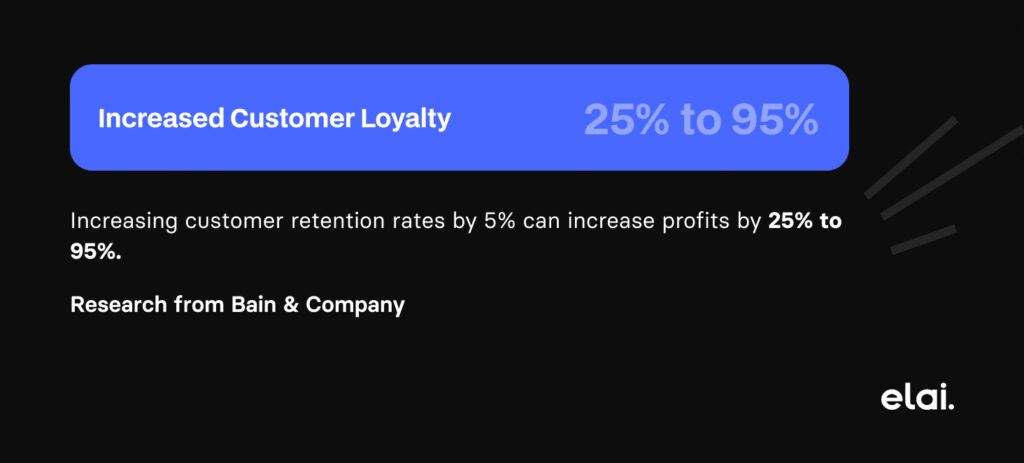
Reduced Support Costs
Well-informed customers tend to require less assistance, which can significantly lower operational expenses. This allows support teams to focus more on complex issues. A study by Forrester found that self-service options, such as online knowledge bases, can reduce support costs by up to $11 per call (SuperOffice CRM).
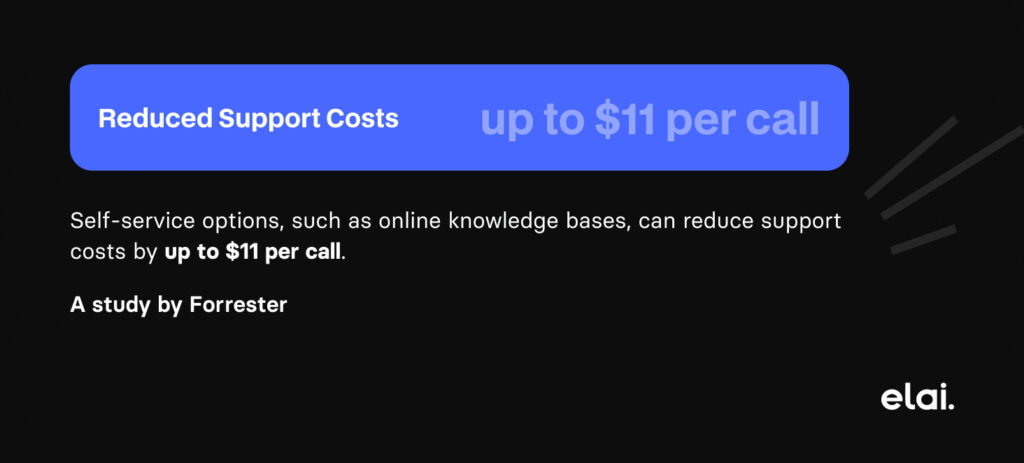
Higher Revenue
Educated customers tend to be more engaged and curious. They’re often interested in discovering new features and services, which can boost sales and overall revenue. Additionally, educating customers can create more opportunities to introduce them to complementary products or upgraded options. Salesforce reports that trained customers tend to buy 21% more than untrained customers (Digital Minds BPO).
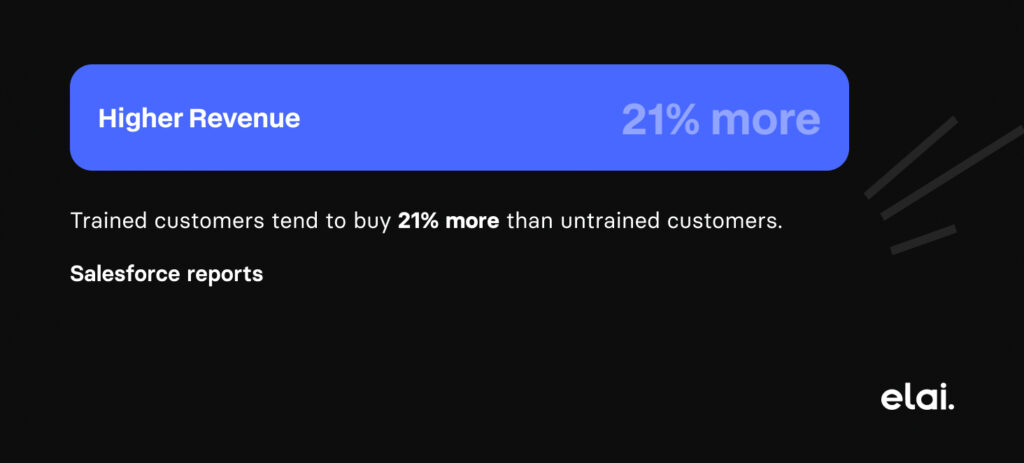
Improved Customer Retention
Effective customer education programs can reduce churn rates by ensuring customers continue to find value in a product or service over time. The Temkin Group found that companies with higher customer education scores see a 16% lower churn rate (Zendesk).
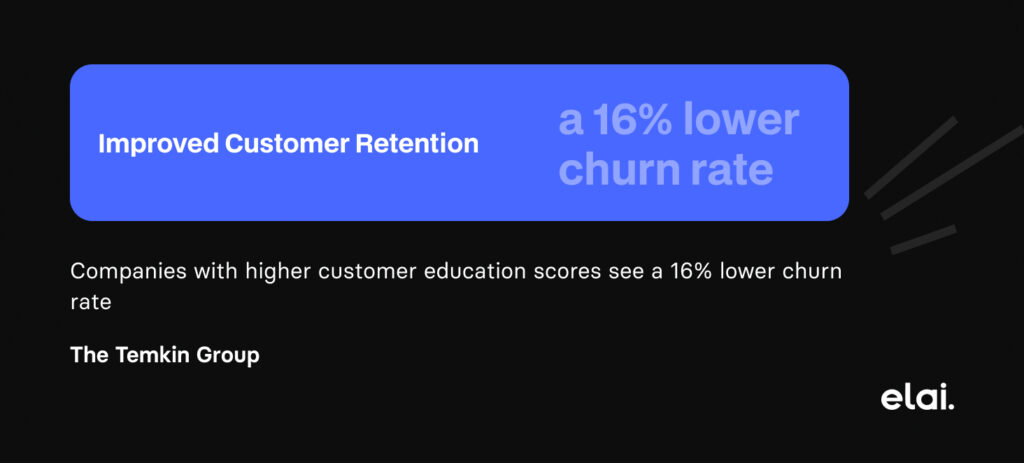
Competitive Advantage
Providing superior customer education can set a company apart from its competitors. Customers are more likely to choose and remain loyal to a brand that offers robust educational resources and support.
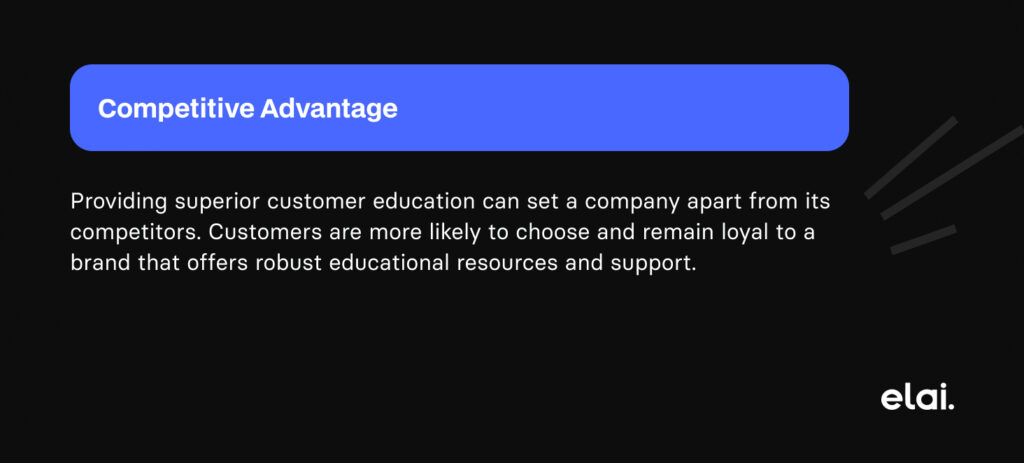
3. Implementing Effective Customer Education Programs
Creating and implementing an effective customer education program involves several key steps:
Identify Customer Needs
It’s essential to grasp your customers’ needs for successful product usage. To achieve this, collect feedback through surveys, interviews, and support interactions. This will pinpoint common inquiries and areas requiring additional customer guidance.
Develop Comprehensive Resources
Create a variety of educational materials to cater to different learning styles. This can include:
- Videos and Webinars: Visual and auditory learning resources.
- Guides and FAQs: Written content for detailed instructions.
- Interactive Demos: Hands-on training sessions to reinforce learning.
Leverage Technology
Utilize technology to deliver education efficiently. Learning management systems (LMS), customer portals, and mobile apps can provide structured and accessible learning paths. These platforms can also track progress and offer personalized learning experiences.
Offer Interactive Training
Hands-on training sessions, workshops, and live demos can be more effective than passive learning and usually lead to better retention. Encourage customer participation to reinforce learning and address specific questions in real time.
One innovative approach to interactive training is the use of interactive videos with AI avatars, such as those provided by Elai. These AI avatars can deliver personalized, engaging, and scalable training experiences that can significantly enhance the learning process via not just explanatory bits, but clickable interactivities and quizzes.
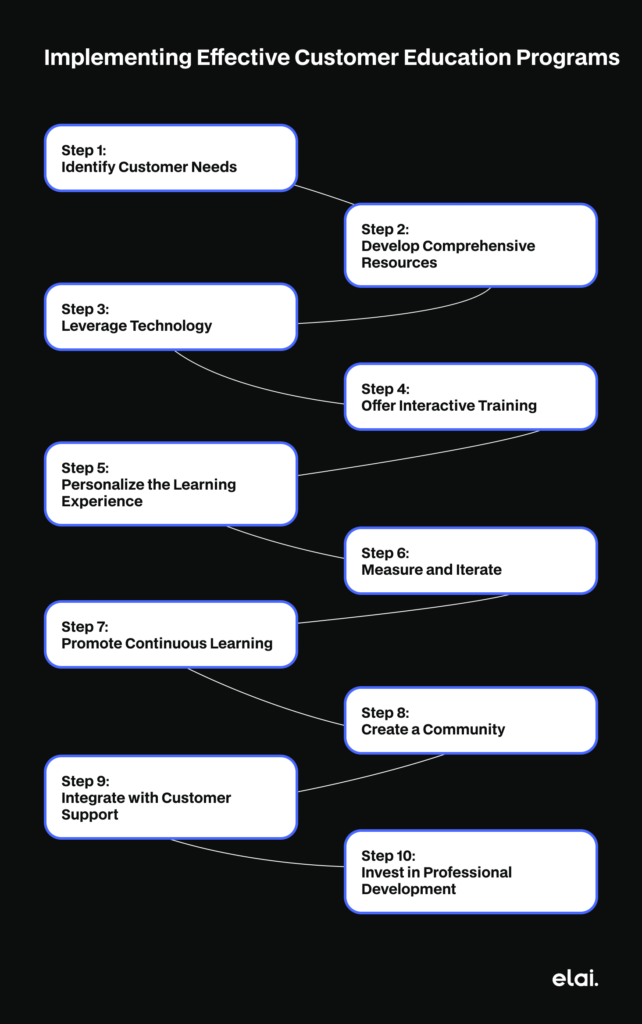
Personalize the Learning Experience
Use customer data to craft educational content to individual needs and preferences. Personalized learning plans allow individuals to progress at their own pace and concentrate on areas requiring additional support.
Measure and Iterate
Track the effectiveness of your education programs through metrics such as customer satisfaction scores, support ticket volume, and usage analytics. Use this data to continually improve the product and onboarding.
Promote Continuous Learning
Encourage customers to keep learning by regularly updating your educational materials and offering advanced training sessions. Highlight new features and best practices to ensure customers stay engaged and informed.
Create a Community
Build a strong customer community through knowledge sharing via online forums and social media groups for peer-to-peer learning.
Integrate with Customer Support
Ensure your customer education program is closely integrated with your customer support team. This allows support agents to direct customers to relevant educational resources and ensures a seamless experience.
Invest in Professional Development
Empower your customer education team with ongoing professional development. Equip them with the latest instructional design methods and tools to create exceptional learning experiences.
4. Evaluating Customer Education Impact
Key Metrics
- Customer Satisfaction Scores: Measure how satisfied customers are with the education they receive.
- Support Ticket Volume: Track the number of support requests to see if they decrease as education improves.
- Usage Analytics: Analyze how customers use your products and whether they explore advanced features.
- Customer Retention Rates: Monitor whether educated customers are less likely to churn.
- Net Promoter Score (NPS): Analyse how likely customers are to recommend your company to others.
Feedback Collection
Regularly collect feedback from customers about the education materials and sessions they find most useful. Use this feedback to improve your programs.
Use data and feedback to refine and enhance your customer education initiatives. Stay updated with the latest educational technologies and methodologies to keep your programs effective.
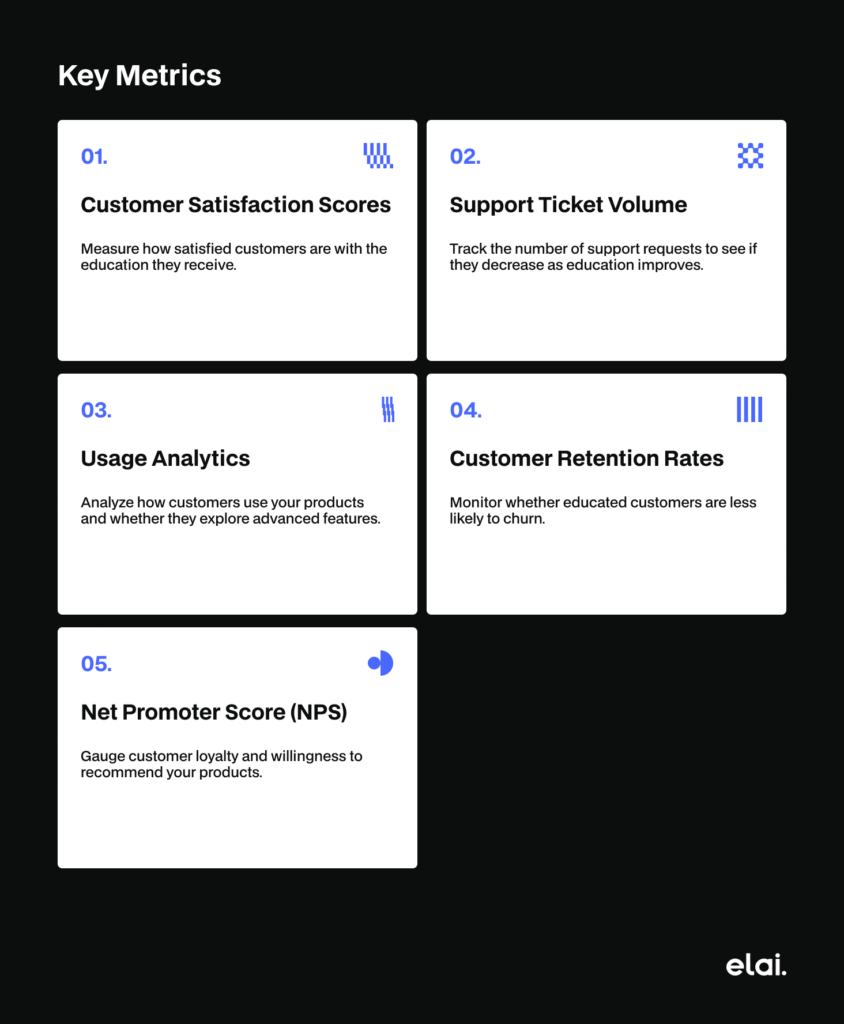
5. Case Studies of Successful Customer Education
Salesforce offers a robust education platform called Trailhead, which provides interactive learning paths for its users. This program has effectively helped customers maximize Salesforce’s capabilities, leading to broader usage and increased satisfaction.
HubSpot Academy provides free online courses to help users master HubSpot’s tools and improve customer satisfaction.
IBM’s SkillsBuild platform offers a wide range of educational resources for both customers and partners. This program helps users gain proficiency in IBM’s products and technologies, which has resulted in improved customer outcomes and loyalty.
There is no need to say that customer education is the key to transforming your relationship with your customer. You have to ensure that the target audience understands the principles of operating the product that your company sells and the key aspects of the resources that you offer. It will likewise affect the overall effectiveness of your business and help it save time and effort on customer support services. Seeing how virtually every customer turns to a company for help and explaining the same aspects again is not only time-consuming but also depleting of the facility’s resources, it is evident that having the customer informed right away is paramount to a successful service. In addition, the development of technology will allow even more opportunities to turn customer education programs into something new and client-oriented. Thanks to the advances in AI, the provided programs will become even more personalized, mobile, and interactive, rendering the learning experience every bit as exciting as it should be.
In the fast-paced environment of modern business, customer education is becoming an incredibly potent tool. Reduced customer support costs, increased profit generation rate, and a prominent advantage over one’s competitors are also the effects of effective customer education. Overall, after taking these factors into account, one must admit that customer education programs are no longer a luxury for their customers to enjoy but rather a necessity for a targeted business to thrive. With the help of the approaches and strategies outlined in the given guide, businesses will be able to create the conditions for a successful CE program that will have beneficial effects for both clients and the company.

